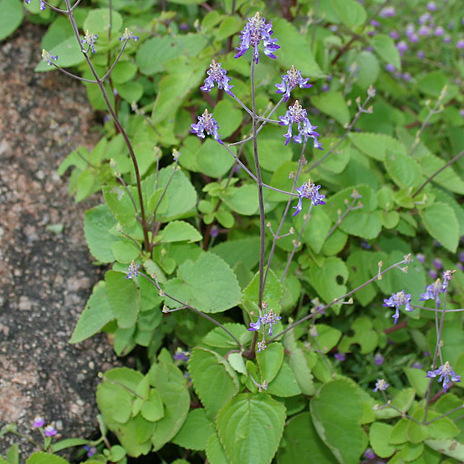Herbs annual. Stems erect, 30-60 cm tall, robust, branched, villous, subglabrous at apex. Petiole 1.3-5 cm, densely white tomentose; leaf blade ovate-oblong to circular, 5-7 × 5-7 cm, corrugate, white tomentose, sparsely red glandular, base cordate to rounded, margin crenulate, apex obtuse to rounded. Spikes 2.5-7.5 × 0.9-1.9 cm, long pedunculate, 4-angled in fruit. Calyx ca. 4.5 mm, puberulent, rarely lanate; tube constricted at mouth, dilated in fruit; upper lip ovate, margin entire, reflexed, membranous, ciliate, covering mouth; lower lip truncate, margin indistinctly dentate. Corolla purplish, ca. 9 mm, densely pubescent outside; tube slender, exserted, recurved at middle, dilated at throat; upper lip 4-lobed; lower lip concave. Anterior stamens slightly exserted. Nutlets unknown. Fl. Mar.
More
A herb. It grows each year from seed. It is 30-60 cm tall. The stems are erect, robust and branched. The leaves are oval or round and 5-7 cm long by 5-7 cm wide. They are rough and have a white coating. The base is rounded and the edges are wavy. The flowers are in spikes 3-7 cm long by 1-2 cm wide. They are purplish. The plant has an aroma.

